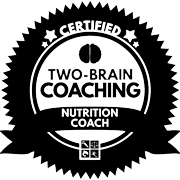In our last installment of heart rate training, we discussed assessing your peak heart rate and creating custom heart rate zones. If you need a refresh on that, here is the blog post.
Now that you have learned to assess your heart rate peak and identify training zones we are ready to implement it. We must start with how much activity should we get.
Some research-backed guidelines for working out are to acquire 150 minutes of moderate or 75 minutes of vigorous activity, or a combination of the two is best.
What quantifies moderate and vigorous activity? The chart below will help define these values. Even though workout levels may be different for each individual due to fitness level (see below), this chart is a good starting point to assess your effort.
| Light < 3.0 METs | Moderate 3.0-6.0 METs | Vigorous > 6.0 METS |
| Walking slowly sitting using computer standing light work (cooking, washing dishes)Fishing sitting playing most instruments | Walking very briskly (4 mph)Cleaning heavy (washing windows, vacuuming, mopping)Mowing lawn (power mower)Bicycling light effort (10-12 mph)Badminton recreationalTennis doubles | HikingJogging at 6 mphShovelingCarrying heavy loadsBicycling fast (14-16 mph)Basketball game soccer game tennis singles |
These types of efforts can now be compared against heart rate zones so you know how intense each effort is based on your current fitness level. As I mentioned previously, everyone responds differently to different stimuli so having a way to gauge your effort will help tremendously. This is why I like to use a combination of markers, Rate of Perceived Exertion (RPE), heart rate (HR), and sometimes Watts on the bike.
Heart Rate Zones
Zone 1 and 2 are equal to Light intensity work
Zone 3 is equal to Moderate intensity work
Zone 4 and 5 are equal to Vigorous intensity work
https://www.whoop.com/thelocker/max-heart-rate-training-zones/
How to Start Safely
If you are just starting an exercise program, it is best to start on the light and moderate side first and slowly ramp up over time. In my 20 years of experience, this is the most neglected variable for exercise. A lot of people go too hard in the beginning and eventually end up with an injury. These people have to then be sidelined for a few days or several weeks recovering. Going easier in the beginning and allowing your body to adapt will be the best prescription.
If you’re doing nothing for exercise right now, I suggest starting off with walking at different paces or different grades of terrain. While walking use your heart rate monitor to track your heart rate at these different variations. Over time, you will see your heart does not have to work as hard to accomplish the same activity.
When these changes start to happen it is good to start increasing your intensity a couple of times per week. You can even start to add some resistance training to the mix which will help you increase your intensity as well as many other benefits.
Get Strong
Resistance training will help you gain strength in your muscles and connective tissue as well as build neuromuscular connections to move easier. We always have our clients start with basic movements that ensure we are getting a total body workout. Since most of our client’s resistance train 2-3x a week, total body strength training is the best for them.
If you want more information on resistance training, here are some articles to help inspire you:
Strength Train Now to Prevent a Weak Future
Here is also a link to our “Master of Movement” YouTube series. In this series, you will learn how to move more optimally so you lessen your likelihood of injury.
If you have any questions please email us at info@theperformanceranch.com We are here to help you live your best life.



